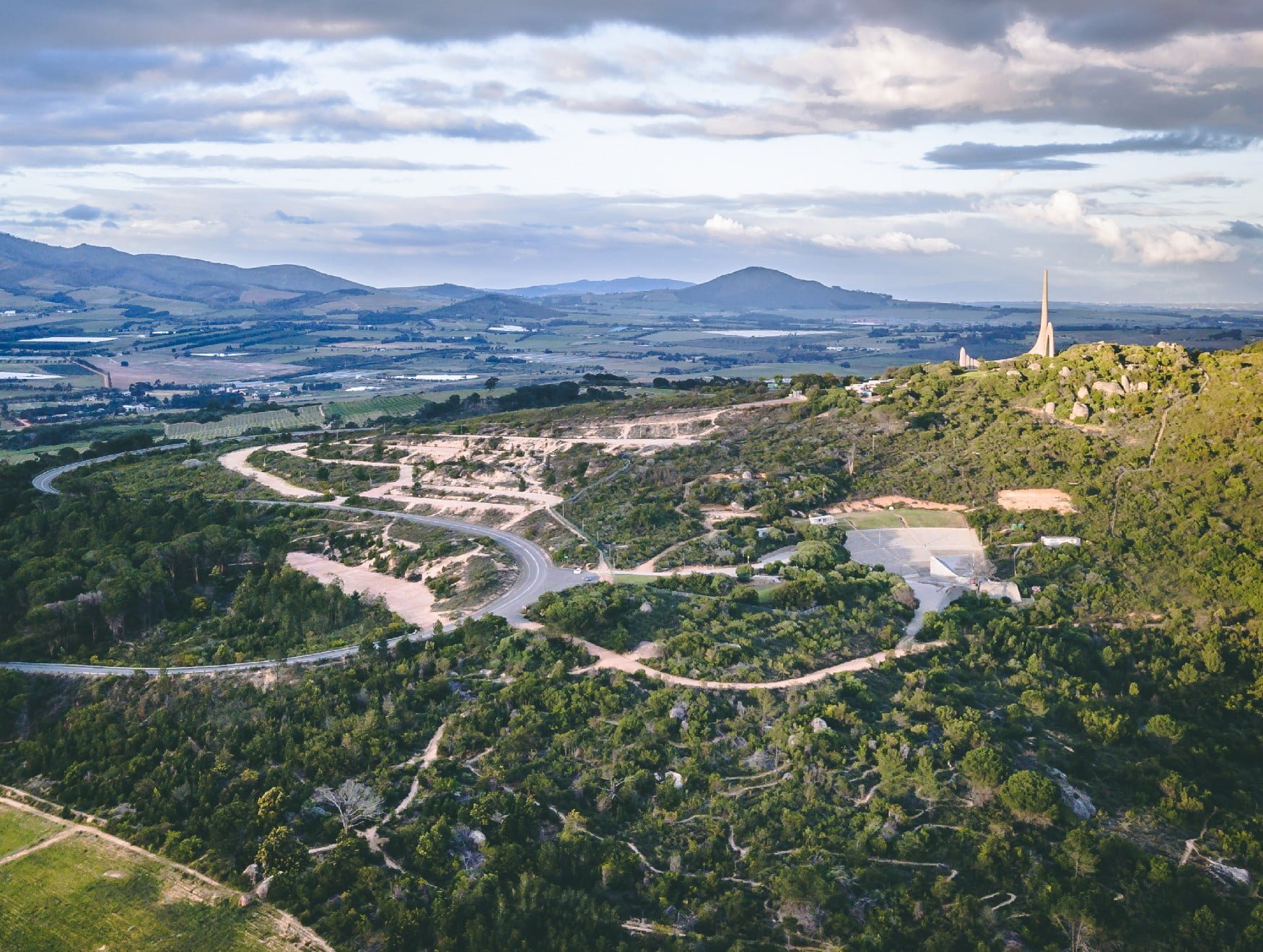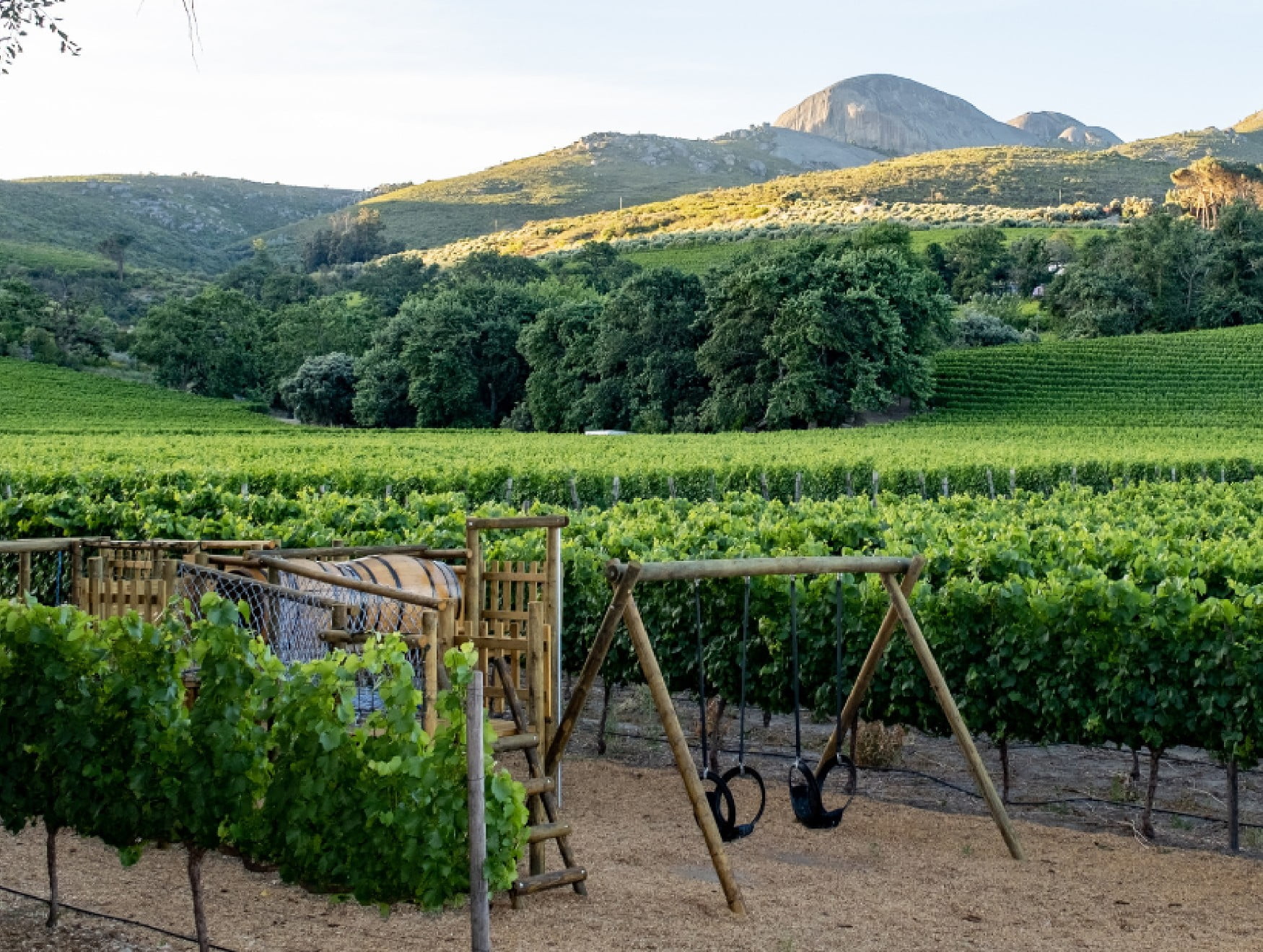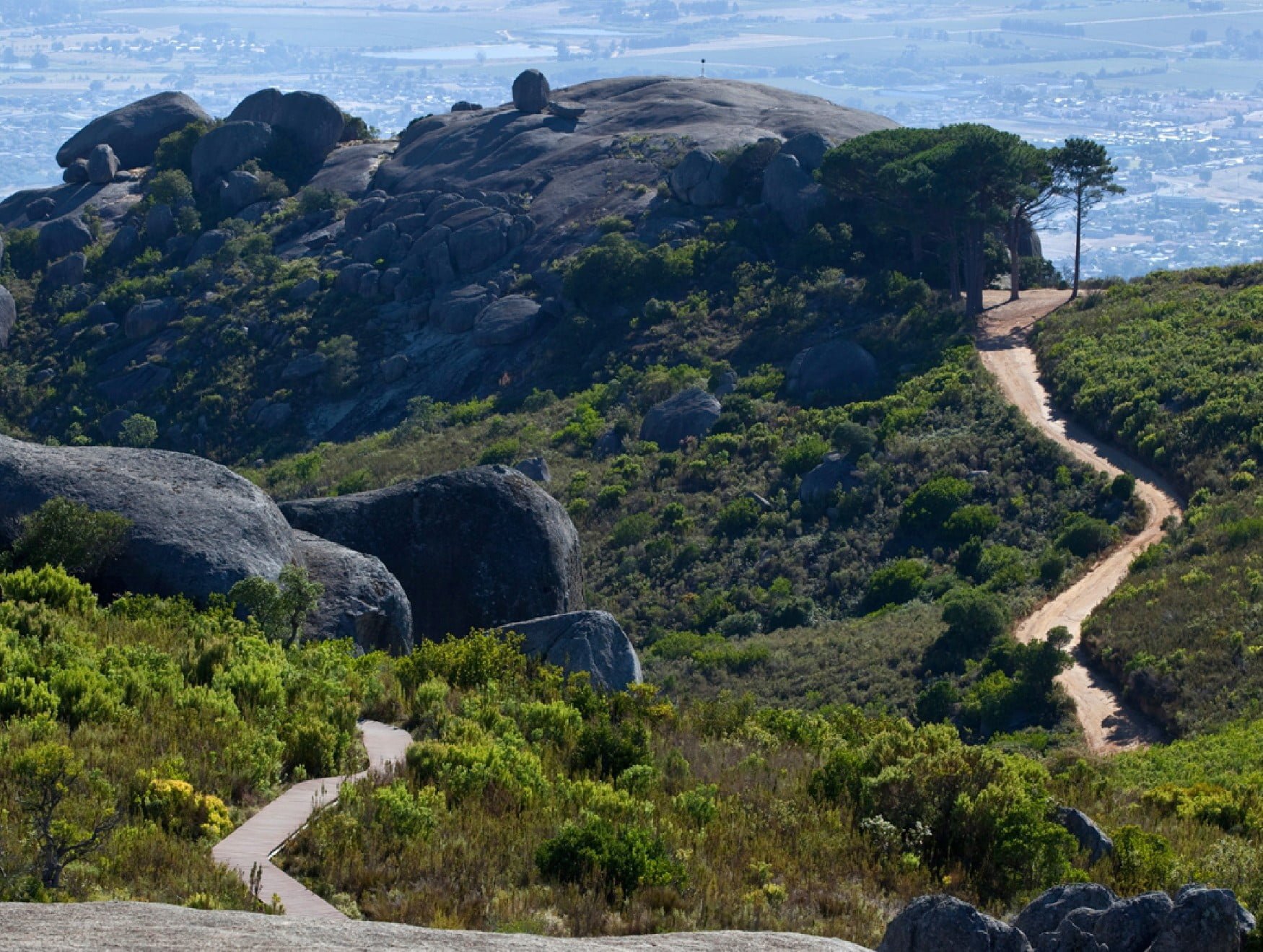“The main feature in Paarl is the mountain,” says Charles Back of Fairview and Spice Route fame. “It’s the second largest block of granite in the world.” The historic town is named for this monolith, ‘Paarl’ meaning ‘Pearl’ for the way Paarl Rock glistens after the rains.

In many ways Paarl can be considered the heart of Boland wine production. Its central position means it shares borders with all the main wine producing districts: it lies north of Stellenbosch, to the north-east and north is Wellington and the Swartland respectively, and Groot and Klein Drakenstein mountains and Franschhoek ranges to the south-east. Westerly, the open landscape rolls all the way out to Durbanville, and the cooling coastal influences that funnel in.
The Paarl district includes the wards of Simonsberg-Paarl, on the foothills of the Simonsberg, Agter-Paarl and Voor Paardeberg. The climate is warm to moderate Mediterranean with mild winters and adequate rainfall (approximately 500 to 700 mm annually), with many different micro-pockets of soils and climates in the diverse region. Ostensibly land-locked cooling/moderating influences and access to water for irrigation are hugely important. Its lifeblood is the Berg River, flanked by the Groot Drakenstein and Wemmershoek ranges.

The topography is critical for viticulture, every possible aspect and plenty of altitudinous sites are available, from the low-lying floodplains to the steep foothills of the Drakenstein basin.
Soils are also divergent, from the preponderance of decomposed granite from Paarl Rock, acidic potassium-rich gravel, to shale and sandstone to heavier deposits of loam and clay. Uniquely, ancient vilafontes soils are found here too – one of the oldest documented soil types – which inspired the creation of premium red wine brand, Vilafonté.
All this diversity translates into the wines, many – if not all – varieties are able to flourish here. Back postulates that there are many similarities to the neighbouring Swartland, where it is likewise possible to farm a variety of grapes successfully.
With this natural aptitude for grape-growing, it makes sense that viticulturists are using the terroir as a canvas for future proofing against climate change.

“We’re looking at new varieties like grenache noir, grenache blanc, durif, verdelho, and so on, for coping with a warming climate,” confirms Hanno van Schalkwyk, viticultural consultant at VinPro. “There are GenZ demo plots that include these varieties as well as clone and rootstock trials to prepare for greater drought resistance.”
Diverse, and also one of the most historic. Founded in 1687 the architecture is a complex blend of Cape Dutch, Victorian, and Georgian, much of which can be enjoyed along the stretch of the 12 kilometre main road, the longest in South Africa. Its mountain is also home to the Afrikaans Language Monument. And, everywhere you look, you’ll see vineyards. Established in the late 17th century by French Huguenots, wine-growing has always been pivotal for the survival and growth of the settlement.
Back, a well known prospector of new and interesting sites, refers to a high altitude site, where slate ripples through granite, here he farms grenache. Or ‘a lonely hill’ at the very edge of the region which produces some of his portfolio’s best sauvignon blanc, which he says often betters the coastal examples from Darling. He highlights pinotage too, particularly grapes grown on sandy soils, ‘these wines can be phenomenal, and very distinctly from Paarl’.
“There are a lot of good things happening in Paarl,” affirms Back. “Many of us producers here are now increasingly using Paarl Wine of Origin on our labels, whereas before we mostly just used the coastal origin.
“Paarl is under-going a renaissance, and it’s because of the style that we find here, wines can have both finesse and a bit of muscle.”
Speaking to Heinrich Schloms, GIS/Soil Scientist at VinPro, he shares that there are some exciting plans in the works with the demarcation committee, one such proposal is a new ward, Klein Drakenstein.
“When I think of Paarl, I think of South Africa,” says Schloms. “It’s surrounded by all the main wine producing districts – and because of this, it’s got a bit of everything.”
It also has a proven track record of fine wine production. “When it comes to wine history Paarl is second to none,” continues Schloms. Zonnebloem for one he says dates back to the early part of the 18th century. The British royal family, and the queen in particular were said to enjoy the estate’s cabernet. “That put South African wine on the map.
“Paarl should not be underestimated.”
By Malu Lambert